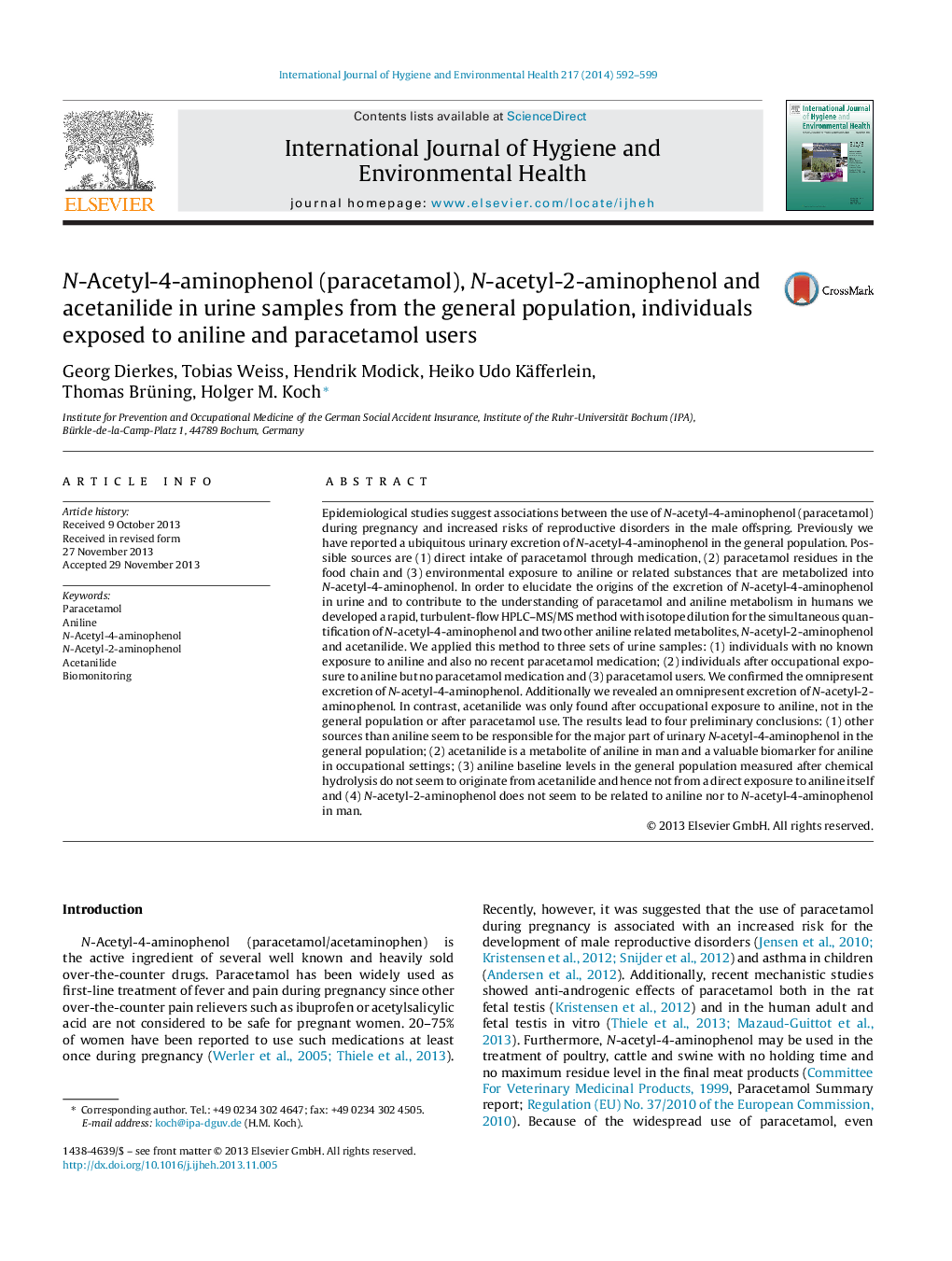| Article ID | Journal | Published Year | Pages | File Type |
|---|---|---|---|---|
| 2588561 | International Journal of Hygiene and Environmental Health | 2014 | 8 Pages |
Epidemiological studies suggest associations between the use of N-acetyl-4-aminophenol (paracetamol) during pregnancy and increased risks of reproductive disorders in the male offspring. Previously we have reported a ubiquitous urinary excretion of N-acetyl-4-aminophenol in the general population. Possible sources are (1) direct intake of paracetamol through medication, (2) paracetamol residues in the food chain and (3) environmental exposure to aniline or related substances that are metabolized into N-acetyl-4-aminophenol. In order to elucidate the origins of the excretion of N-acetyl-4-aminophenol in urine and to contribute to the understanding of paracetamol and aniline metabolism in humans we developed a rapid, turbulent-flow HPLC–MS/MS method with isotope dilution for the simultaneous quantification of N-acetyl-4-aminophenol and two other aniline related metabolites, N-acetyl-2-aminophenol and acetanilide. We applied this method to three sets of urine samples: (1) individuals with no known exposure to aniline and also no recent paracetamol medication; (2) individuals after occupational exposure to aniline but no paracetamol medication and (3) paracetamol users. We confirmed the omnipresent excretion of N-acetyl-4-aminophenol. Additionally we revealed an omnipresent excretion of N-acetyl-2-aminophenol. In contrast, acetanilide was only found after occupational exposure to aniline, not in the general population or after paracetamol use. The results lead to four preliminary conclusions: (1) other sources than aniline seem to be responsible for the major part of urinary N-acetyl-4-aminophenol in the general population; (2) acetanilide is a metabolite of aniline in man and a valuable biomarker for aniline in occupational settings; (3) aniline baseline levels in the general population measured after chemical hydrolysis do not seem to originate from acetanilide and hence not from a direct exposure to aniline itself and (4) N-acetyl-2-aminophenol does not seem to be related to aniline nor to N-acetyl-4-aminophenol in man.
